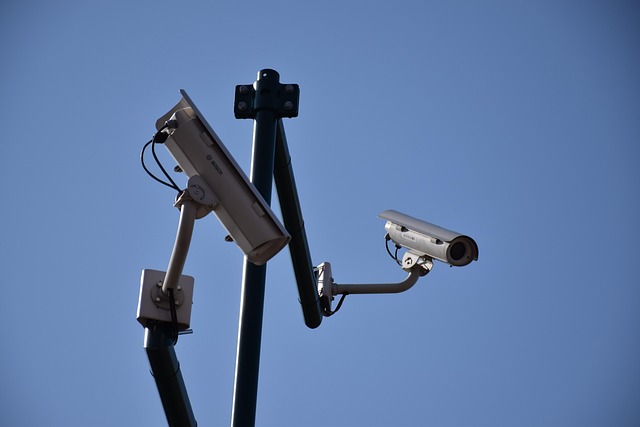Thermal imaging technology in smart security cameras enhances surveillance by detecting heat radiation, revealing intruders in dark or obscured areas. These cameras offer continuous monitoring, faster response times, and accurate threat assessment, especially valuable for critical infrastructure and challenging environments. They use advanced analytics and AI to differentiate between people, animals, and objects, minimizing false alarms. With remote access via mobile apps, smart security cameras provide global peace of mind while offering powerful intrusion detection capabilities through 24/7 heat-based monitoring. Strategic placement and regular calibration maximize their effectiveness in enhancing safety measures.
“Thermal imaging cameras emerge as powerful tools in enhancing security measures, particularly for intrusion detection. This article delves into the innovative world of thermal imaging technology, highlighting its role in identifying heat signatures that elude conventional surveillance. We explore the advantages of integrating smart security cameras for efficient intruder detection, offering insights on their capabilities and unique benefits. Additionally, practical tips are provided to optimize heat-based surveillance through implementation and maintenance strategies.”
Understanding Thermal Imaging Technology for Security
Thermal imaging technology has emerged as a powerful tool in the realm of smart security cameras, offering unique capabilities for intrusion detection and surveillance. Unlike traditional visual cameras that rely on light, thermal imaging cameras detect and visualize heat radiation emitted by objects and individuals. This innovative approach enables users to capture images based on temperature variations, making it an effective way to identify heat signatures of potential intruders in the dark or through obstacles like smoke or fog.
In today’s digital era, smart security cameras equipped with thermal imaging capabilities provide enhanced security measures. They can seamlessly navigate challenging environments, ensuring constant vigilance even in low-visibility conditions. By utilizing heat detection, these cameras offer a sophisticated level of monitoring, allowing for quicker response times and more accurate threat assessment. This technology is particularly valuable for critical infrastructure sites, perimeter security, and any location where traditional visual surveillance might be compromised.
Advantages of Using Smart Security Cameras for Intrusion Detection
Smart security cameras offer a range of advantages for intrusion detection, making them an increasingly popular choice for enhancing home and business security. One of their key benefits is the ability to provide continuous, real-time monitoring of your property. Unlike traditional security systems that may rely on motion sensors or alarms, these smart cameras can detect subtle changes in temperature, allowing them to identify intruders even when they attempt to blend in with the environment. This thermal imaging capability ensures that every corner of your premises is visible and analysable, providing a comprehensive security solution.
Additionally, smart security cameras often come equipped with advanced analytics and AI features, enabling them to learn patterns and differentiate between people, animals, or objects. This level of intelligence allows for more accurate intrusion alerts, reducing false positives commonly associated with traditional surveillance systems. The integration of these cameras into a home or business network also facilitates remote access and monitoring through mobile apps, offering convenience and peace of mind from anywhere in the world.
Heat Signatures: Uncovering Invisible Threats
Heat signatures offer a unique and powerful way to detect potential threats, making them an invaluable asset in smart security camera systems. These advanced devices can ‘see’ beyond visible light, capturing infrared radiation emitted by objects and individuals, which creates distinct thermal patterns. By analyzing these heat signatures, security professionals can uncover hidden dangers that might go unnoticed by traditional cameras.
Infrared technology enables the identification of body heat, allowing for accurate human detection, even in complete darkness or through obstacles like foliage or smoke. This capability is a game-changer for intrusion detection, providing round-the-clock surveillance and ensuring swift response to any unauthorized entries. With their ability to reveal hidden activities and individuals, smart security cameras equipped with thermal imaging take safety measures to the next level.
Implementation and Maintenance Tips for Efficient Heat-Based Surveillance
Implementing thermal imaging cameras for heat-based intrusion detection requires strategic placement for optimal coverage. Smart security cameras equipped with thermography can monitor temperature variations, effectively detecting unauthorized access during off-peak hours or in areas with poor line-of-sight. Positioning them near entry points, such as windows and doors, and elevated areas offering a broader field of view maximizes their capabilities. Regular calibration ensures accuracy, so schedule routine maintenance checks to keep these smart security cameras functioning at peak performance. Additionally, integrating thermal imaging data with existing surveillance systems allows for comprehensive analysis, enhancing overall security measures.
Thermal imaging cameras, integrated with advanced smart security camera systems, offer a powerful tool for intrusion detection by identifying heat signatures that are invisible to the naked eye. By leveraging these innovative technologies, security professionals can enhance their surveillance capabilities, ensuring faster response times and improved safety measures. Smart security cameras equipped with thermal imaging provide 24/7 monitoring, making them an efficient solution for both residential and commercial properties. With proper implementation and regular maintenance, heat-based intrusion detection systems can significantly contribute to a safer environment.
